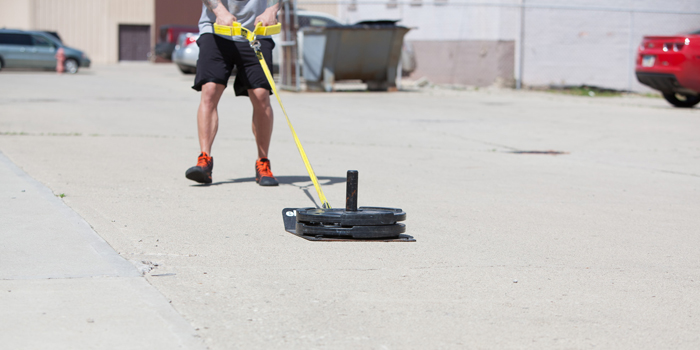
There are many terms in the fitness/strength and conditioning industry that are overused to the point where people can no longer actually define them. General Physical Preparedness (GPP) is an example of one of those terms that is often spoken about but hard to define.
In its simplest form, GPP training is any training that isn’t specific to what is required in your sport or occupation. Even though GPP training is not specific itself, the idea behind it is that improving your general physical qualities will transfer over to improving your sport-specific performance by making you a more robust individual.
Robustness is developed by minimizing your weaknesses in your general physical skill set and widening your physical capabilities scope to answer any performance-related problems you may encounter.
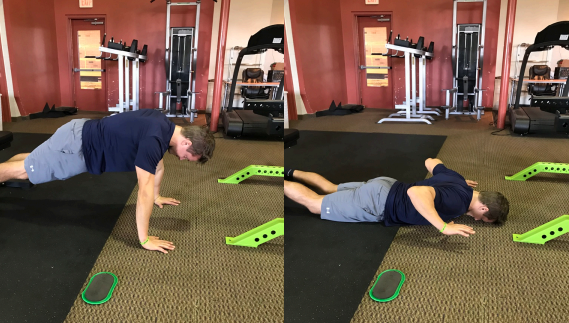
GPP: Widening the Base
As we have all heard many times, a pyramid can only be as tall as its base is wide. Essentially, this means having a wide base is very important if you want to reach peak performance. GPP is the base of the pyramid, so spending a dedicated period of time establishing this is essential for long-term success and development. For this to happen, certain components of training must be included in the program to lay a solid foundation.
RELATED: Conjugate Sequence System: General Physical Preparedness and the Yearly Plan
The major components of GPP that should be focused on are motor pattern learning, work capacity, and movement variability. Obviously, there is a long list of other things one may choose to focus on, but these three components cannot be overlooked because of their pivotal role in athletic development, as I will discuss later on.
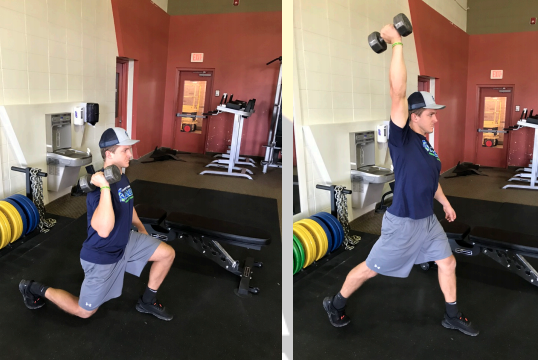
GPP: Major Components
Everyone loves advertising flashy training methods like max strength, speed work, and power development in the fitness industry. It is what people like to see and think that is most important. In reality, though, those methods are only a fraction of what goes into an individual’s training.
Today, many athletes are specializing early in a specific sport, so they are spending their time only developing the qualities they need for that sport. This does not make for a robust individual and limits possible future development. Leading them to reach their peak too early in their careers since a base (GPP) was never developed in the first place.
Time must be spent developing general physical skillsets for peak performance to be reached. Remember, Rome wasn’t built in a day. Below I explain the main components of GPP training:
Motor Pattern Learning
All individuals should master the four basic human movement patterns before moving onto more complex and higher intensity training methods. This is because they are the basis of everything we do. These movement patterns are the push (squat), hinge (RDL/deadlift), press (horizontal/vertical), and pull (horizontal/vertical). You can think of these four movements as the base of the movement “pyramid.”
Work Capacity
For an individual to train at high intensities in the future, they must first develop a capacity to handle training at lower intensities. During GPP, the focus of training is on volume, not intensity, because it builds up work capacity. If work capacity is improved, future training will be more effective. This is because they will train at higher volumes, both within a week or a single session, presenting more opportunities to improve. Also, the ability to recover between training sessions will amplify so that performance will be optimal more often.
Movement Variability
With training intensity typically being lower during GPP, it is a great time to introduce a wide variety of movements to the individuals you work with. Allow them to become proficient with them before they intensify in future phases. Also, you can drill in the finer details of all these movements, so no compensation patterns are developed, minimizing the risk of future injury.
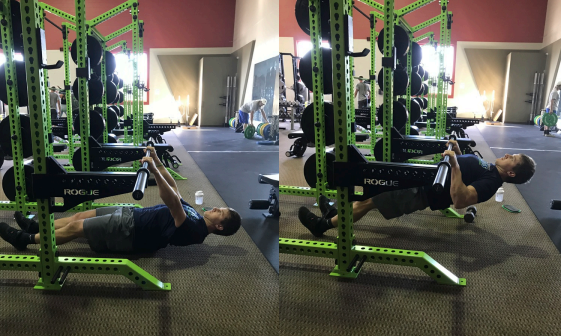
GPP: When to Use It
A GPP phase is applicable many times throughout a training year for every individual. Below I will go over the particular times I have found it most effective.
Off-Season/Post-Break Training
After finishing a competitive season, most individuals take a break from training to recharge their batteries from the physical and mental stress they endured. A great way to gradually re-introduce training after a period of rest is with a GPP phase because it rebuilds the base of the pyramid. This ensures training does not advance too quickly and capacity is developed before intensity. The same applies above for an individual who has taken time off from training due to reasons other than competition.
Post-Injury
Returning from an injury is similar to taking a break from training, except the process is much more stressful due to the body working hard to recover. A GPP phase is a good option for them early in their return to play for building capacity back up, like mentioned above. Also, it will reintroduce a large variety of movements at a low intensity, so any compensation patterns that were wither develop while dealing with the injury or that caused the injury in the first place, can be corrected while intensity is low.
Deload
After a period of intense training, it is very common for trainers to implement a deload, so the individuals they are working with do not overtrain and have an opportunity to recover. A brief GPP phase is a good option for a deload because it shifts the focus of training from intensity to volume—giving the trainee's nervous system an opportunity to recover while the focus is on work capacity.
Active Recovery
A GPP type workout is a great choice for an active recovery workout because ample blood flow is generated, there is minimal eccentric loading, and the training intensity is low. All these factors contribute to individuals feeling better leaving the gym than they did when they entered. Active recovery workouts are typically applied when individuals are feeling run down as a second option from their normal training session or as a way to break a sweat and get some movement in on an off day.
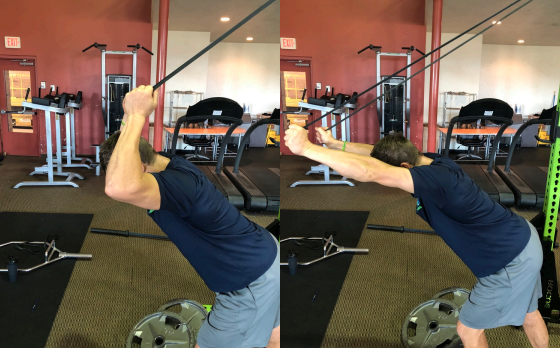
GPP: How to Implement
Now that you have an understanding of what GPP training is, why it’s important, and when to use it, here's how to implement it.
Phase Length
The length of a GPP phase is dependent upon what your purpose for using the phase is. If you're using it at the beginning of an off-season after time off, it can last anywhere between one to four weeks depending on how much time was taken off. If it is being utilized for deload purposes, then it will normally only last one to two weeks. Lastly for active recovery, it should be used one to two days a week depending on the individual’s needs.
Major Training Variables
Due to the nature of GPP training being more volume-driven than intensity-driven, the focus will be on maximizing the individual’s work capacity. This will be done by adjusting two different variables, volume, and density. The first is gradually increasing the total volume of work that is performed on a session or weekly basis. The second is increasing training density by either minimizing rest between sets or speeding up the rate at which sets are performed. Leading to more work being performed in the same amount or less time.
Training Method
For GPP training, my preferred method is utilizing circuits because they are such an efficient use of time, especially when working with large groups. They allow for large amounts of volume to be accumulated in short periods of time. Many different movements can be used in one workout with the use of stations. Also, the entire session can be based on specific work to rest ratios, allowing more control over the total volume performed.
The bulk of the movements I prescribe during GPP are either bodyweight, dumbbell loaded, or band loaded to keep intensity lower. With these movements, I focus on improving movement proficiency in all three planes of motion, both unilaterally and bilaterally. Also, if I have access to sleds and the Prowler®, I utilize them as well because they cause minimum muscle damage as a concentric-based exercise and are effective at developing capacity. Another great option is including isometrics because of the minimal mechanical damage they cause since no movement takes place.
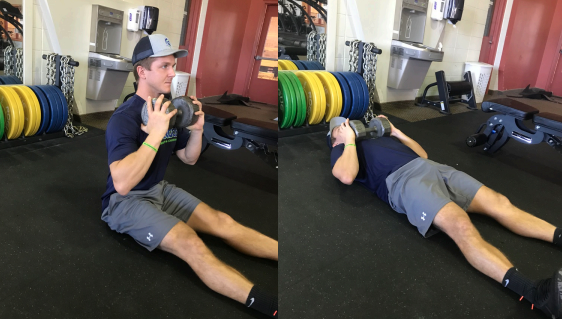
GPP Giant Circuit
Below I have attached the GPP Giant Circuit. It is an effective training tool I have developed over the years to use during a GPP phase.
GPP GIANT CIRCUIT (CLICKABLE LINK)
Here's why the GPP Giant Circuit is ideal:
- Works well in a large group setting because each exercise in the circuit can be used as a station
- Controlling volume is manageable by adjusting work to rest
- Develops basic movement patterns in multiple planes of motion
- Targets every muscle group (both locally and globally)
- Simple to progress by increasing load or volume of each exercise
- Improves coordination by performing movements that include upper and lower body actions
- Enhances work capacity (aerobic system), preparing individuals for future high-intensity training
- Can be performed individually as well with minimal equipment (a great at-home workout option)
I hope this article explained what GPP is and why it is important for long-term development! I hope you utilize the GPP Giant Circuit and find it as effective as I have.











* As an older PT I'm not particularly media savvy so I'm only just building a website and professional online presence.